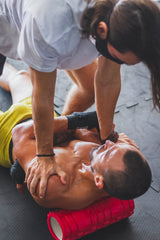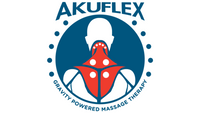Self Myofascial Techniques: A Guide to Pain Management
Anyone who has experienced pain knows how disruptive it can be to daily life. If you're dealing with aches or pains that don’t seem to go away, Self-myofascial techniques (SMTs) may be the answer you've been looking for.
In this post, we’ll discuss what SMTs are, explain their benefits, and provide some tips on incorporating them into your lifestyle for better overall health and wellbeing.

SMTs are a form of self massage that involves applying pressure to tender areas or trigger points in the body with fingers, hands, or other devices such as foam rollers or massage balls.
Current literature supports these techniques to be used for two primary reasons but before diving in, let's first cover what fascia is.

Fascia or myofascial tissue is the connective tissue in the body that surrounds and holds every muscle and organ in place, all the way down to nerves and blood vessels.
Being one of the richest sensory organs in the body, fascia's sensitivity can be compared similar to that of skin.
Poor posture and repetitive movements can create dysfunction within this tissue and eventually lead to an injury-and-repair response in the body coined the cumulative injury cycle.
If these myofascial tissues are not stimulated by movement, lengthening, and broadening, these dysfunctions can act as a roadblock preventing soft tissue mobility.
Benefits of Self Myofascial Techniques
1.)Mechanical effects
Direct pressure may reduce viscosity and restriction of the fascia through fluid change (fascial hydration) and stimulating cellular responses.
- Reduced tissue viscosity
- Fascial hydration
- Reduced arterial stiffness
- Circulatory improvements
2.)Neurophysiological effects
It seems direct pressure is responsible for relaxing tissue via the golgi tendon reflex.
- Increased tissue relaxation due to input via golgi tendon, gamma loop modulation, and mechanoreceptor signaling.
- Pain modulation due to cutaneous receptor, mechanoreceptor, and pain receptor pathway stimulation.
- Reduction in pain sensations and spinal-level CNS excitability.
Incorporating SMTs
- Studies have had participants use devices at a perceived level of pain (50%,70%, & 90% of maximal pain). No difference was found in mobility nor impairments of strength and jump performance; so, ideal pressure is on an individual basis.
- Some discomfort should be experienced, but it's important to be able to relax and breathe deeply, so if either become difficult, regress in pressure.
- To reduce overactivity or tension, apply pressure to tender area(s) for 30 - 60 seconds or until a reduction of pain is felt. (neurophysiological)
- Once a reduction in tension is achieved, the next step (optional) is to introduce active movements while applying pressure. (mechanical)
- Avoid direct pressure over bony prominences.
The AkuFlex™
As mentioned above, poor posture and repetitive movements are a major cause of pain being experienced. One of the most common being tech neck, or looking down at screens of some sort for extended periods of time.
As the head moves forward, the suboccipital muscles (base of skull) must contract to support the weight of the head. Over time, this can lead to overactivity of these muscles and result in regular neck pain and headaches.
Similarly, forward head posture, is also linked with overactivity of the upper trapezius and levator scapulae, which is why pain and tension may also be experienced between the shoulders and shoulder blades.
The AkuFlex™ was precisely engineered with this in mind, to address the overactivity in the suboccipitals and upper back simultaneously; a massage therapists fingers and elbows in a box.
Disclaimer
Contraindications are conditions in which the risk likely outweigh the potential benefits, if you have any of these, consult with a medical professional before performing SMTs:
- Skin rashes, wounds, inflammation, bruises, tumors
- Osteoporosis, deep vein thrombosis, fractures
- Cancer, Hypertension, Infection, Neurologic conditions
- Cardiac, liver, or kidney disease, diabetes, connective tissue disorders
- Extreme discomfort or pain felt
- Severe scoliosis or spinal deformity
- Osteomyelitis
